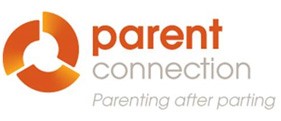Paul and Susan's Story - Relate Mediation Case Study
Background
Clients, Paul, aged 45 and Susan, 40. They came to mediation for finance and property issues and to discuss the arrangements for their three children, Georgia, 15, Harry, 10 and James, 6 upon their separation. After four mediation sessions they had come to an agreement over financial issues. Susan is living in the family home and Paul has moved into a rented house some distance from the family home. They are now discussing the arrangements for the children. There is currently shared contact between Paul and Susan and they want to formalise these arrangements to finalize their mediation agreement.
Paul and Susan’s relationship broke down following Paul’s affair with a work colleague, Heather. They are still together and she often stays at his house. The children, especially Georgia find this difficult when they are staying there as it was Georgia who discovered the affair through reading texts on Paul’s phone.
Although shared contact has been set up on an equal basis, Susan is not happy with this as she feels it is confusing for the children having to living two homes, especially with Heather present a lot of the time. The mediator wonders if Child Consultation might be useful in this case to get their views on the situation. She tentatively brings in the possibility of child consultation, and despite some initial reservations on Susan’s part as she was worried that this could upset the children, who not surprisingly, were already finding their parents’ separation difficult. After some discussion both agreed that it would be worth asking the children if they would consider this.
The mediator explained that it was important that both parents were in agreement with the children coming in, as a key factor is that both can deal with any feedback from them, however difficult this might be for them to hear. In fact this could be more damaging to them if Susan or Paul were unable to cope, or got into dispute over the feedback from their children.
The Process
Usually child consultation tends to be for older children and young people, aged 10 and above, but when there are older children with younger siblings in the family, then all the children including the younger ones are invited so that no one feels excluded.
The mediator explained the process in that once we had formal permission from the parents, the mediator would write to the children individually to explain the process and give them the opportunity to come in to a session. This would be for approximately 1 hour and would be with two mediators and would be a chance to talk about their feelings and wishes for the future in the light of their parents’ separation.
The mediator explained that she would be at the meeting, together with another mediator experienced in child issues, and that together they would see the children. The boundaries of the session would be made clear to them: that anything discussed would be confidential between themselves and the service, with the exception that if anything was disclosed by them that meant harm could come to themselves or anyone else, that we would have to inform their parents. Other than this, anything we discussed was confidential from their parents and we would agree with them beforehand what would be fed back if anything. We could either feedback to their parents with or without them present, it was their choice. The feedback session would normally take place immediately after the direct consultation session.
Subsequently once the formal agreement from Susan, Paul and the children had been sought, a session went ahead with all three children as they were all keen to be involved. (The room for this is set up with paper, pens and a whiteboard for drawing etc., as well as a sand tray to enable younger children to communicate in non- verbal ways).
A general theme in this case was about the children’s’ need to see their father without Heather who up and till now has almost always been present when they have stayed with him. Georgia in particular felt angry with her for her part in her relationship with her father and doesn’t feel she can talk to Paul with Heather around. Previously they have always had a special relationship with her being his only daughter. Harry and James enjoyed drawing on the whiteboard, Harry drawing images of the family as still together. James also used the sand tray using toy figures to depict their family placing Heather at the complete opposite end of the tray!
In short the children seemed to have accepted that their parents were no longer together, but felt that there were significant difficulties in the logistics of the situation of the shared contact. Heather being in their father’s house added to these difficulties as they found it difficult to build on their relationship with their father with her always being around. They chose to feed back all they had discussed with the mediators and wanted to be present when this happened.
In the feedback session Georgia and James seemed to do most of the talking with the mediators’ help and were able to discuss their feelings about the situation. Both parents got distressed at various points in the session; especially Paul who had no idea how much Heather’s presence was affecting them. They were also surprised about their children’s’ thoughts about living in two homes, which they sometimes found confusing. E.g. James had recently been told off at school for not having his PE kit as it was round the wrong house which is typical of the practical difficulties faced by the children in this situation.
Following the mediation session
Following this session, Paul and Susan’s original mediator saw them on their own for a mediation session. With their increased understanding of the children’s’ issues, they were able to work through these. Paul still wanted shared contact, but was willing to be more flexible about the specific timings, especially with Georgia, who clearly wanted to spend more time at Susan’s house to be closer to her friends. Paul also agreed that they could spend more time with him without Heather present. Susan also agreed to be more flexible in terms of not necessarily sticking to specific days/times if it would help Paul.
The Agreement
Paul and Susan were able to formalise “the arrangements for the children”, which were more flexible than their original ideas but which seemed to work better for the children. They agreed to see how these worked and to return to mediation if necessary.
An additional bonus to this consultation process was that James had been seeing a school counsellor for behavioural issues who was on the point of referring him to CAMHS (The Child and Adolescent Mental Health Team). The improvement in James’ behaviour meant that this referral was no longer necessary.
Relate Mediation London North East






